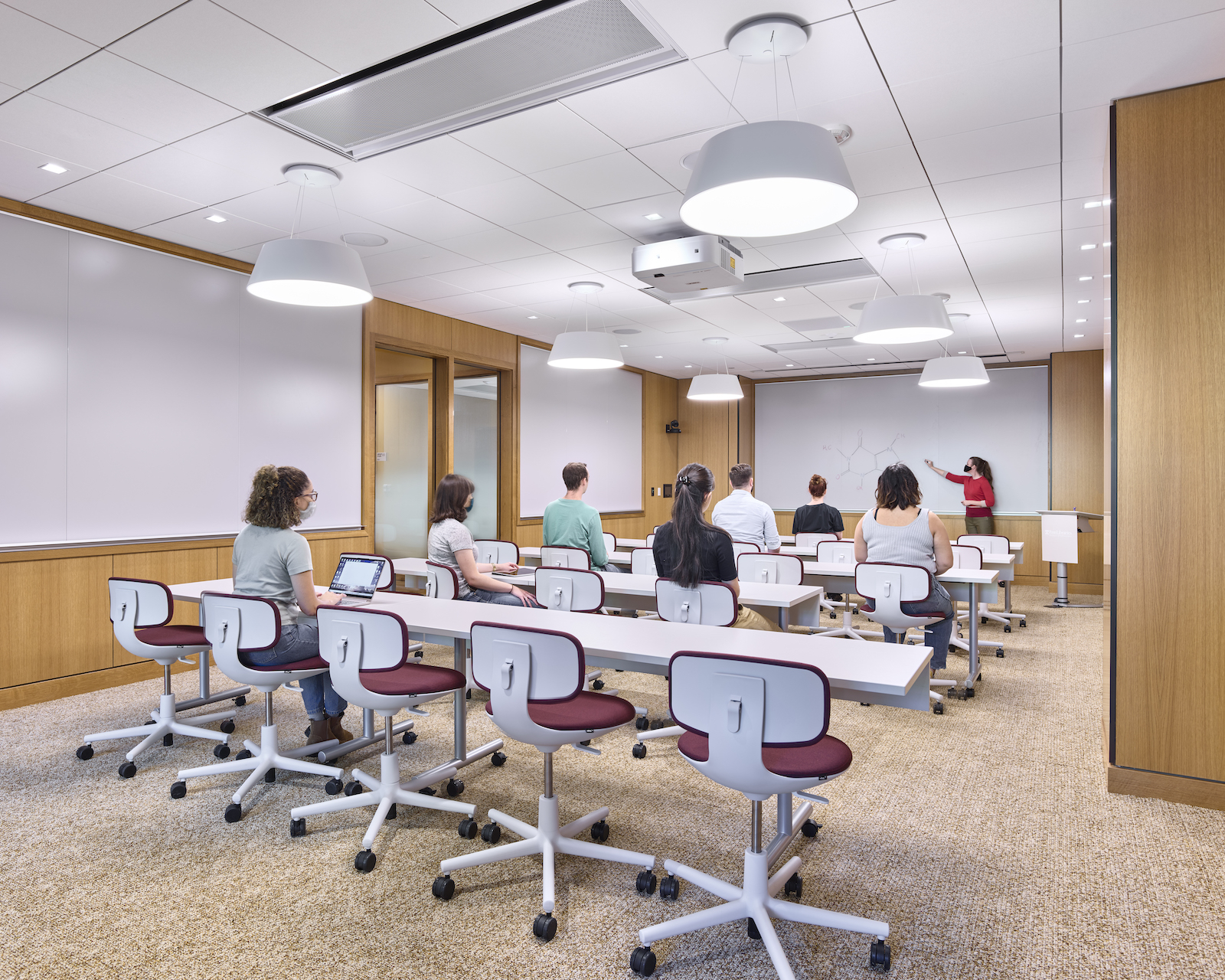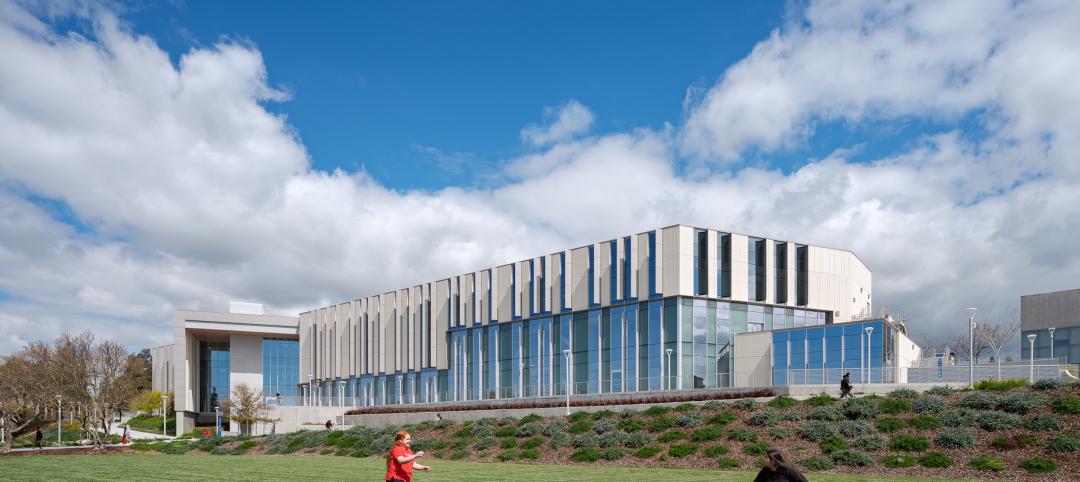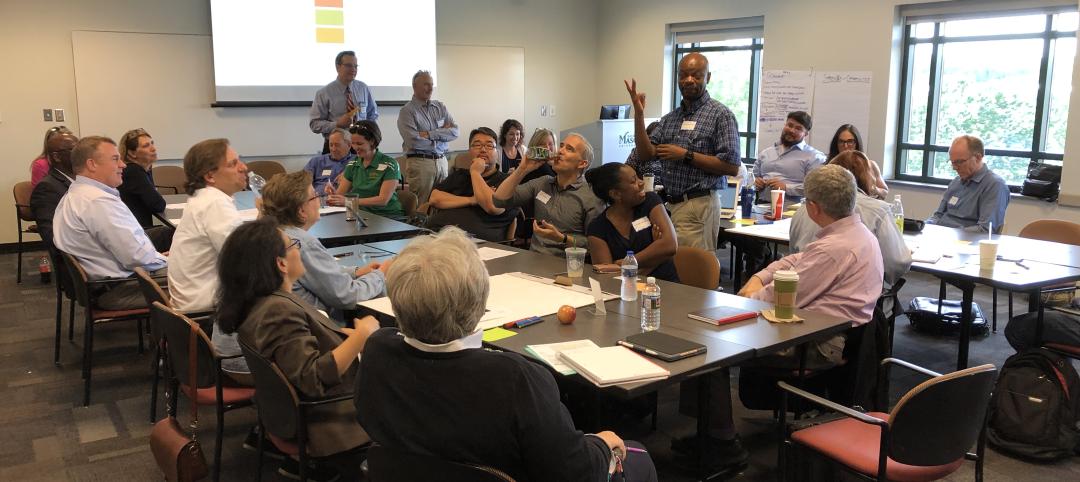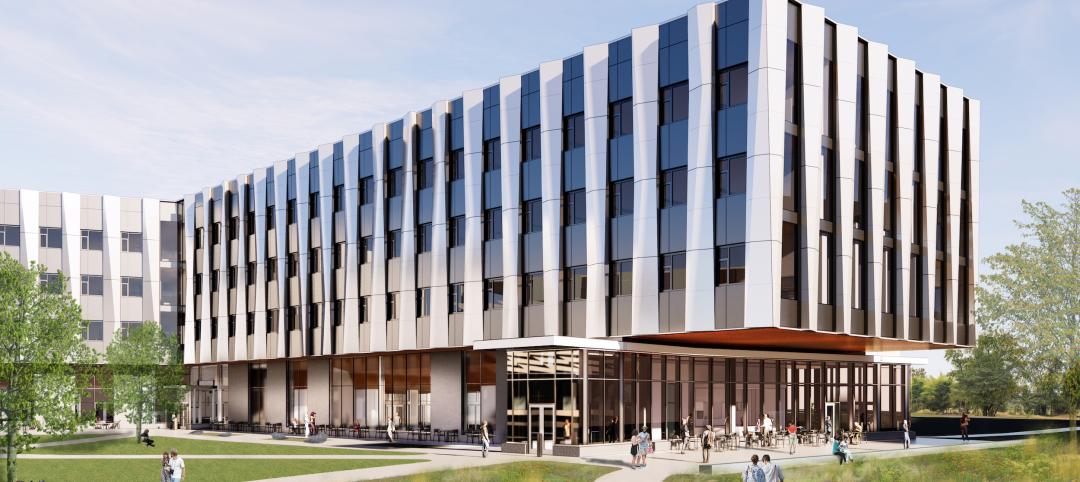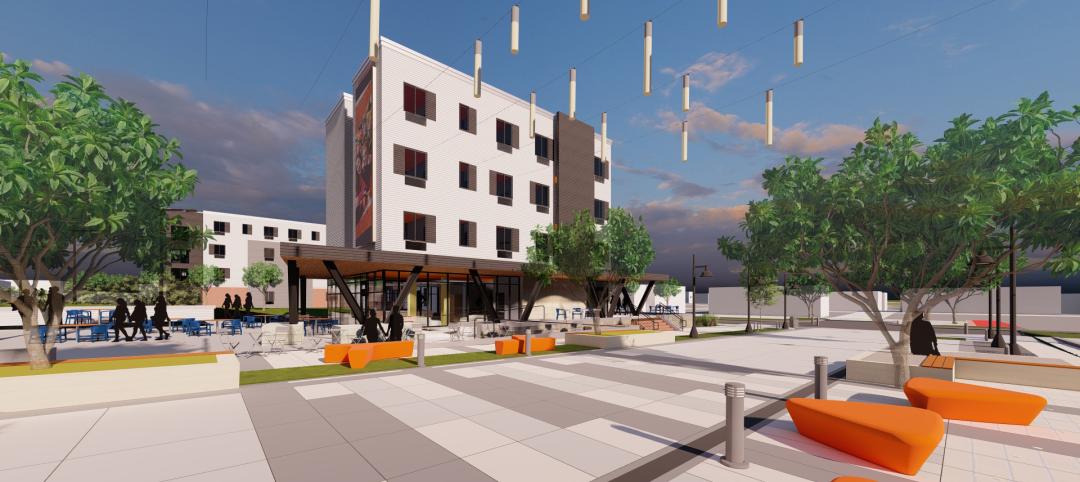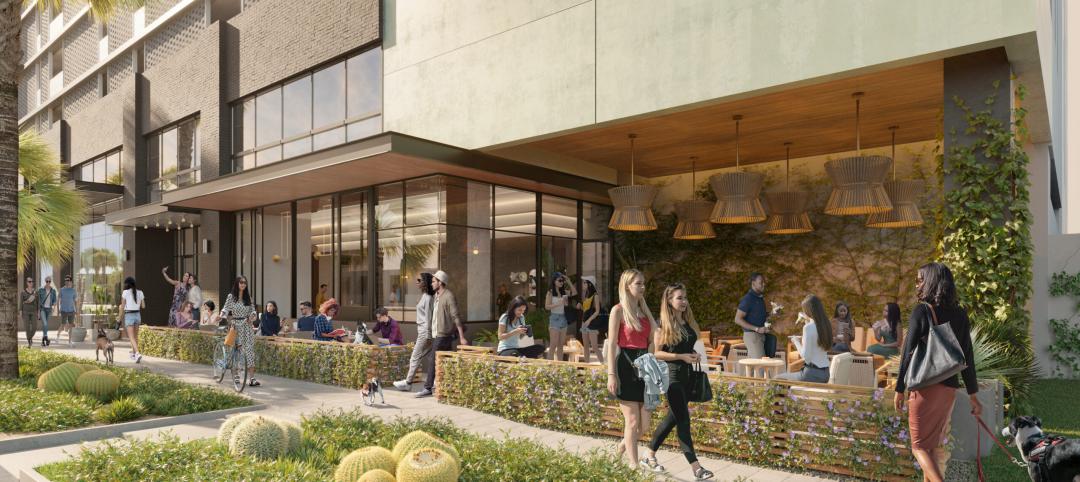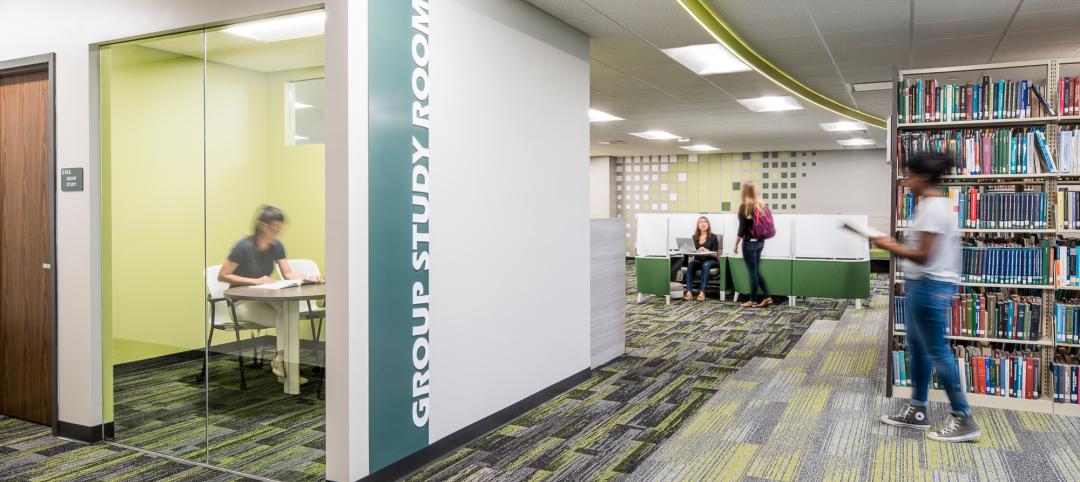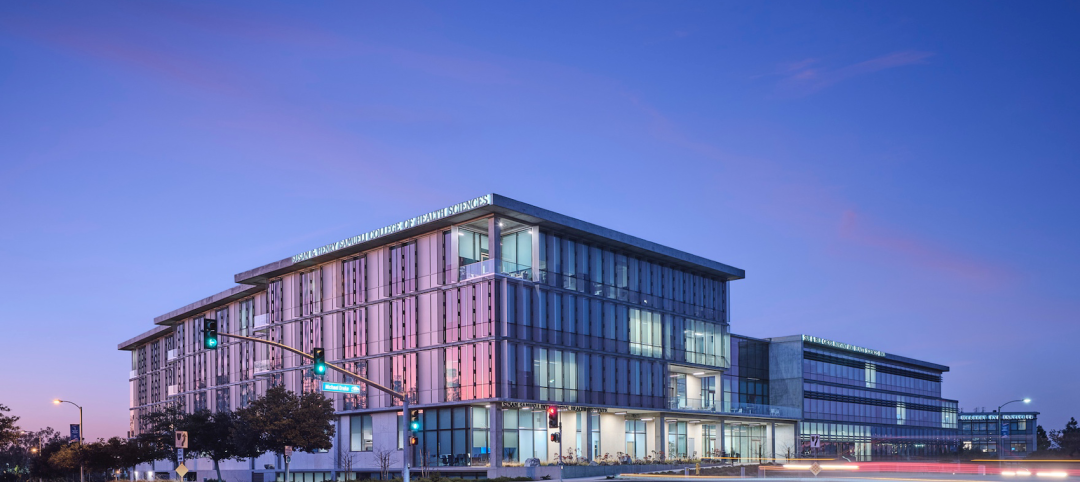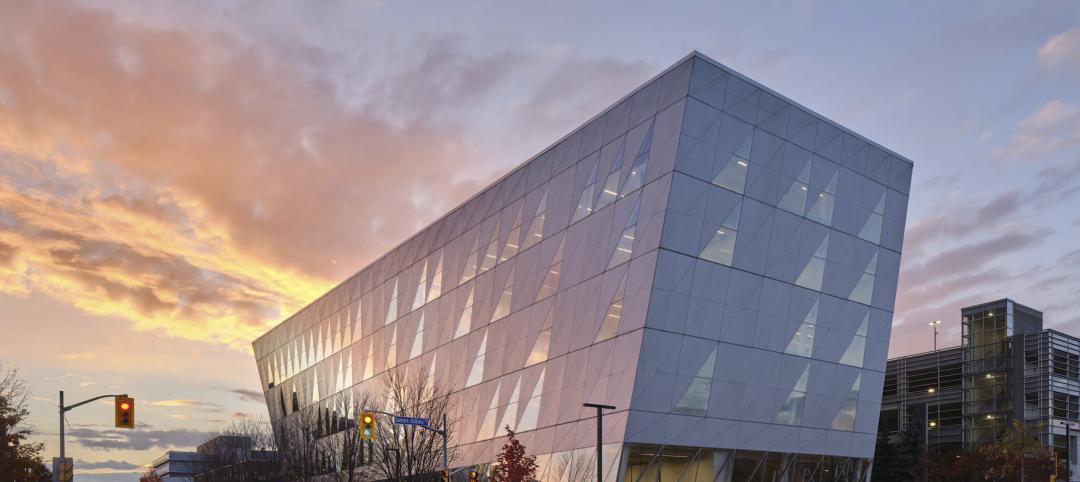The University of Pennsylvania’s Biomedical Library was built on the southern portion of the school’s campus in Philadelphia in the late 1960s. Much has changed in the ensuing decades: Penn has expanded and transformed that part of its campus with research and clinically focused buildings. And digitization has altered the function and purpose of libraries in general to where they are less about being repositories of past knowledge and more about contributing to a dynamic future.
On September 20, 2021, Penn reopened its renovated and expanded library as an open center for cross-disciplinary learning, prototyping, and collaboration. Now called Biotech Commons, the 17,000-sf building supports new modes of research by offering a range of spaces and services—from conference centers to fabrication shops—that is free to be scheduled by any student or faculty member.
“No place is as interdisciplinary as a library space, and the reimagined Biotech Commons takes this to the next level,” Constantia Constantinou, the H. Carton Rogers III Vice Provost and Director of the Penn Libraries, told Penn Today. She predicted that the facility “will enhance the intellectual vitality of Penn as a whole by providing an extraordinary user experience for all.”
The Biotech Commons unites the medical and scientific campus to the north and the core campus to the south, said the university in a statement it sent to BD+C in early January. “It is intended to provide a high-tech, community-building hub that integrates resources and brings together students, faculty, researchers, and staff from multiple disciplines.” The Biotech Commons also serves as “a powerful magnet” for communities from across campus.
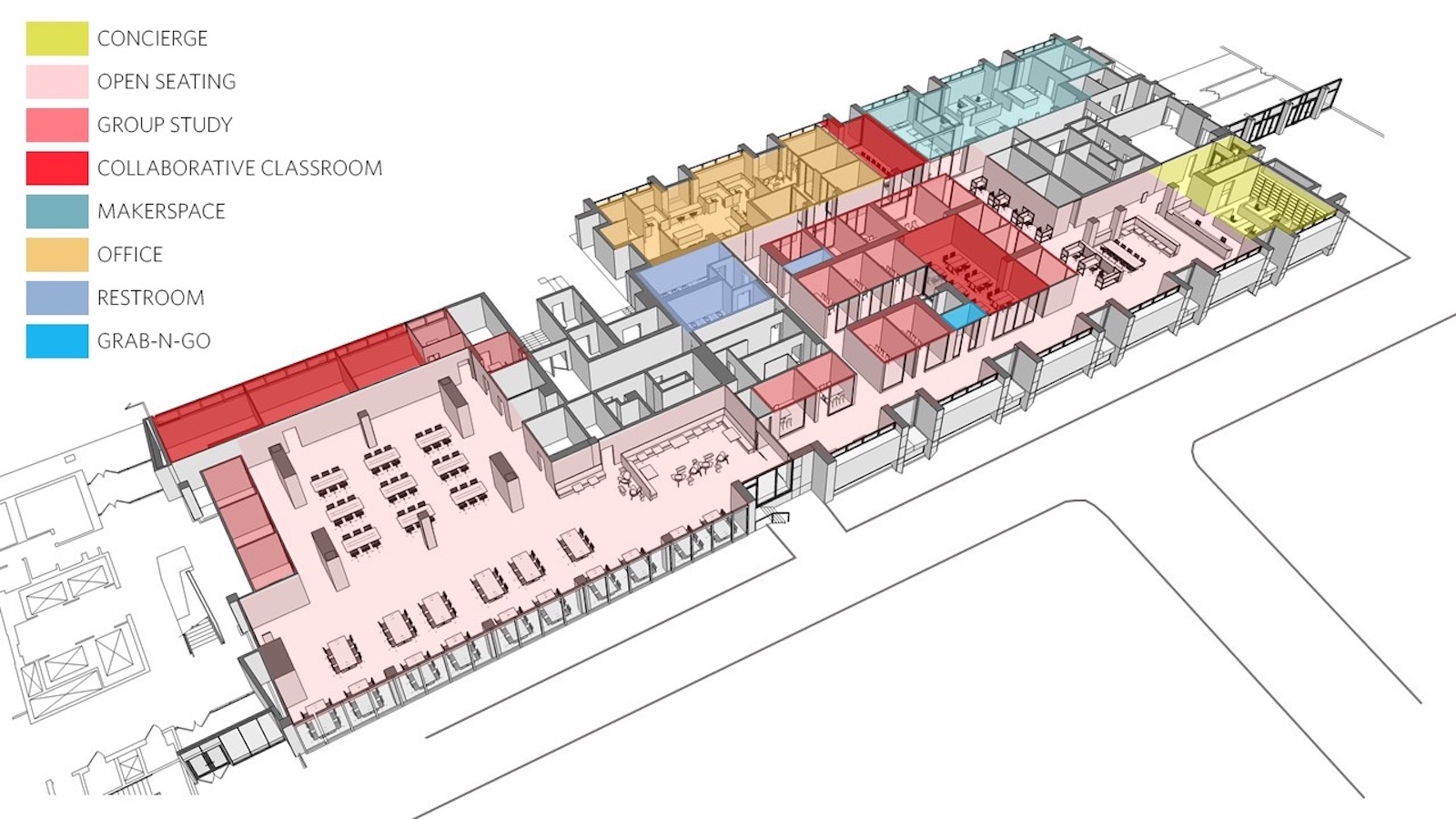
“The facility is very clearly research oriented, and the research is more technologically advanced,” observes Daniela Voith, FAIA, LEED AP BD+C, IIDA, Founding Partner and Director of Design with Voith & Mactavish Architects (VMA), the design architect on the Biotech Commons renovation, which began in December 2020. Voith says that Associate Principal Sennah Loftus, VMA’s project manager, is this firm’s go-to person when it comes to integrating high-level technology into its academic facility designs.
The Judith and William Bollinger Digital Fabrication Lab within Biotech Commons is equipped with nine high-end 3D printers and two 3D scanners, a laser cutter, and plotters for scientific poster printing. The first-of-its-kind anatomy visualization system, called an Anatomage Table, is available for use by all members of the Penn community, allowing for the virtual dissection and review of life-size virtual cadavers outside of clinical lab coursework.
At the heart of Biotech Commons are clusters of adaptable group workspaces. Accommodating anywhere from four to 12 people, these allow students to have impromptu breakout sessions and meetings. A spacious, natural-light-filled reading room offers places for individual study. Various seating options encourage different formats of collaboration, and 20 group study rooms accommodate eight people each. The group studies are acoustically treated, allowing students to work together freely without disrupting others.
The reading room doubles as a multipurpose event space with moveable furniture; a Design Thinking Studio has wall-mounted whiteboards, supplies, and mobile, writable tables; and a Mixed Reality Lab is where faculty and students experiment with virtual and augmented reality. A conference room showcases the libraries’ historic collections. And the flexibly furnished Gershwind & Bennett Family Collaboration Classroom hosts seminars, lecture-style presentations, and active, flipped-classroom style instruction.
Most of the books in the library remained in the stacks on the lower levels, which were outside the renovation area.
Bureaucratic Stalling at the university level
The building team on this $11.5 million project included Wolfe Scott Associates (CM), Burns Engineering, and KMK Consulting (AV/IT). Voith says that about half of what is now Biotech Commons was renovated, and the other half had been used previously as shelf space for Stemmler Hall of the university’s Perelman School of Medicine. The library’s renovation had to be planned around sensitive lab space that included a basement which hosts Zebrafish aquariums with very low tolerances for sound vibration.
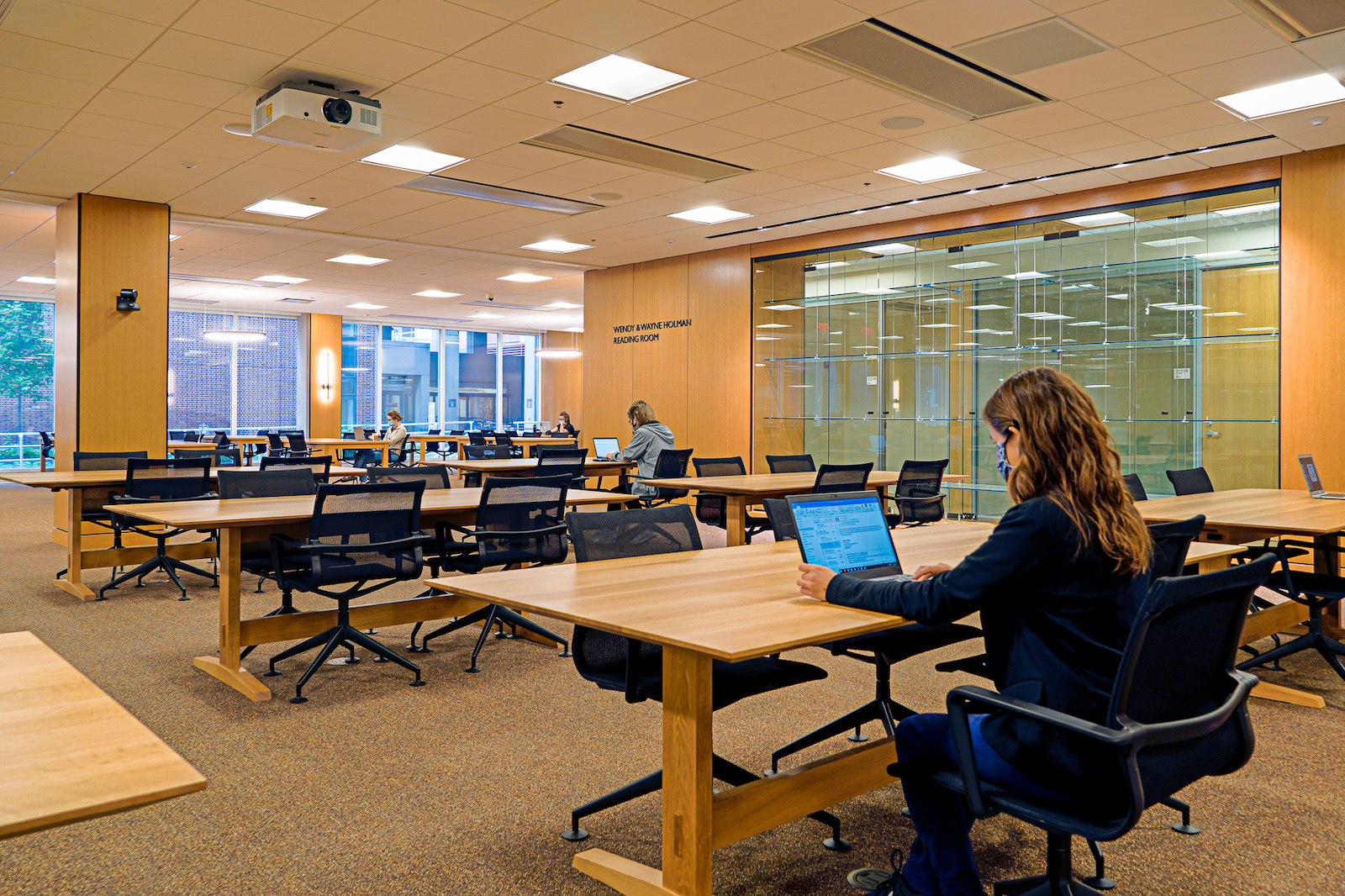
Before VMA came on board for this project, Penn Libraries—that oversees a network of 17 campus buildings—had conducted a feasibility study for the Biomedical Library renovation. VMA proposed several changes, including a new main entrance. Several master plans were bandied about to give the medical school, which is part of this complex, a better entrance, too. However, these changes would have put the project between $5 million and $6 million over budget, says Voith. It took another year to come up with an alternative plan that everyone agreed on.
Related Stories
University Buildings | Jun 14, 2023
Calif. State University’s new ‘library-plus’ building bridges upper and lower campuses
A three-story “library-plus” building at California State University, East Bay (CSUEB) that ties together the upper and lower campuses was recently completed. The 100,977-sf facility, known as the Collaborative Opportunities for Research & Engagement (“CORE”) Building, is one of the busiest libraries in the CSU system. The previous library served 1.2 million visitors annually.
Higher Education | Jun 14, 2023
Designing higher education facilities without knowing the end users
A team of architects with Page offers five important factors to consider when designing spaces for multiple—and potentially changing—stakeholders.
University Buildings | Jun 9, 2023
Cornell’s new information science building will foster dynamic exchange of ideas and quiet, focused research
Construction recently began on Cornell University’s new 135,000-sf building for the Cornell Ann S. Bowers College of Computing and Information Science (Cornell Bowers CIS). The structure will bring together the departments of Computer Science, Information Science, and Statistics and Data Science for the first time in one complex.
Student Housing | Jun 5, 2023
The power of student engagement: How on-campus student housing can increase enrollment
Studies have confirmed that students are more likely to graduate when they live on campus, particularly when the on-campus experience encourages student learning and engagement, writes Design Collaborative's Nathan Woods, AIA.
Urban Planning | Jun 2, 2023
Designing a pedestrian-focused city in downtown Phoenix
What makes a city walkable? Shepley Bulfinch's Omar Bailey, AIA, LEED AP, NOMA, believes pedestrian focused cities benefit most when they're not only easy to navigate, but also create spaces where people can live, work, and play.
Higher Education | May 24, 2023
Designing spaces that promote enrollment
Alyson Mandeville, Higher Education Practice Leader, argues that colleges and universities need to shift their business model—with the help of designers.
University Buildings | May 17, 2023
New UC Irvine health sciences building supports aim to become national model for integrative health
The new College of Health Sciences Building and Nursing & Health Sciences Hall at the University of California Irvine supports the institution’s goal of becoming a national model for integrative health. The new 211,660-sf facility houses nursing, medical doctorate, pharmacy, philosophy, and public health programs in a single building.
University Buildings | May 11, 2023
New ‘bold and twisting’ building consolidates School of Continuing Studies at York University
The design of a new building that consolidates York University’s School of Continuing Studies into one location is a new architectural landmark at the Toronto school’s Keele Campus. “The design is emblematic of the school’s identity and culture, which is centered around accelerated professional growth in the face of a continuously evolving labor market,” according to a news release from Perkins&Will.
Sustainability | May 11, 2023
Let's build toward a circular economy
Eric Corey Freed, Director of Sustainability, CannonDesign, discusses the values of well-designed, regenerative buildings.
Digital Twin | May 8, 2023
What AEC professionals should know about digital twins
A growing number of AEC firms and building owners are finding value in implementing digital twins to unify design, construction, and operational data.


